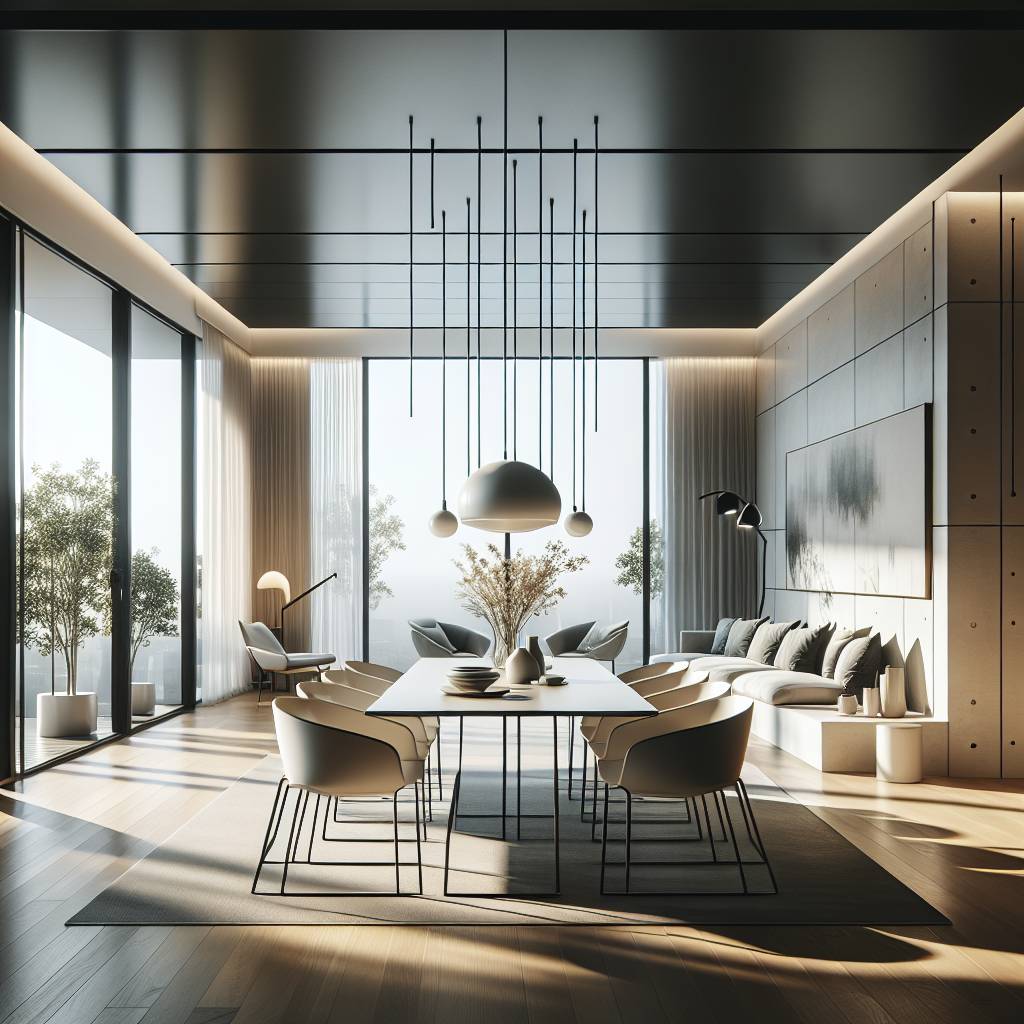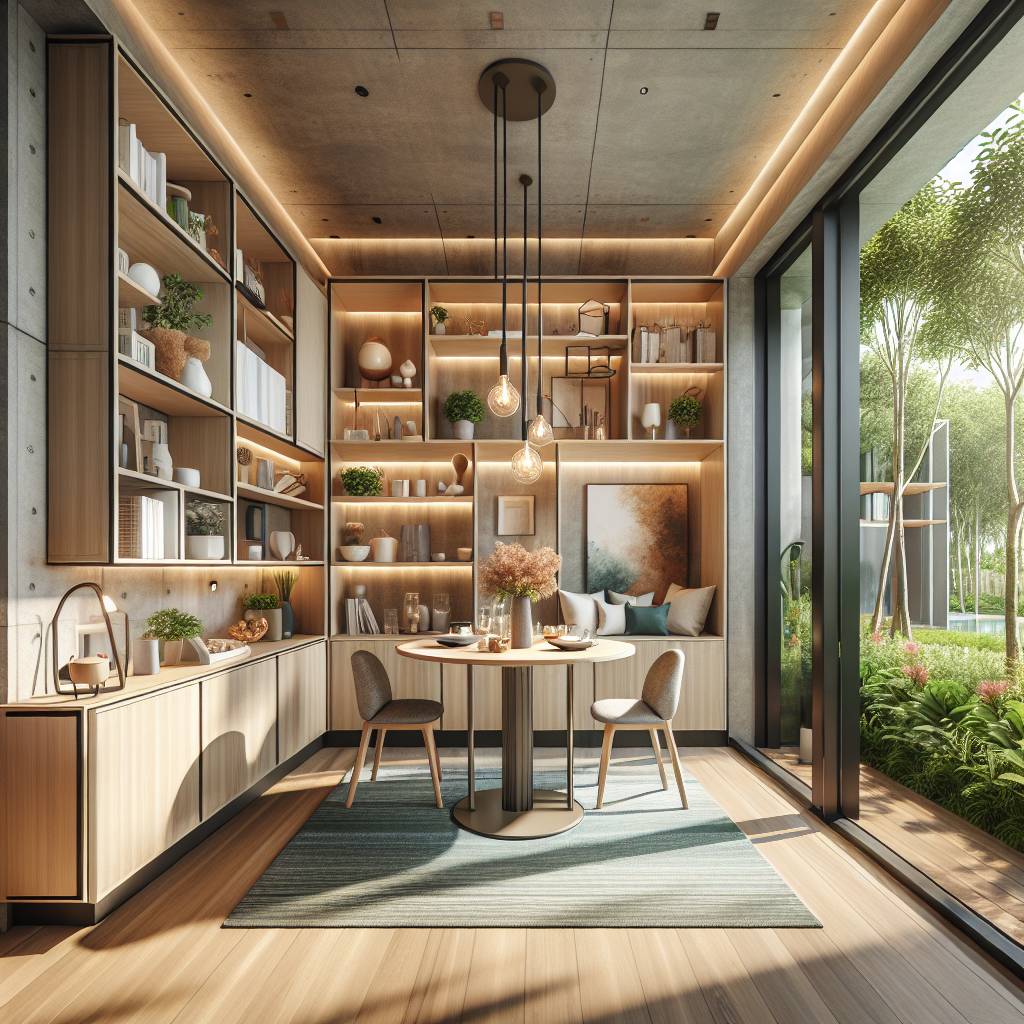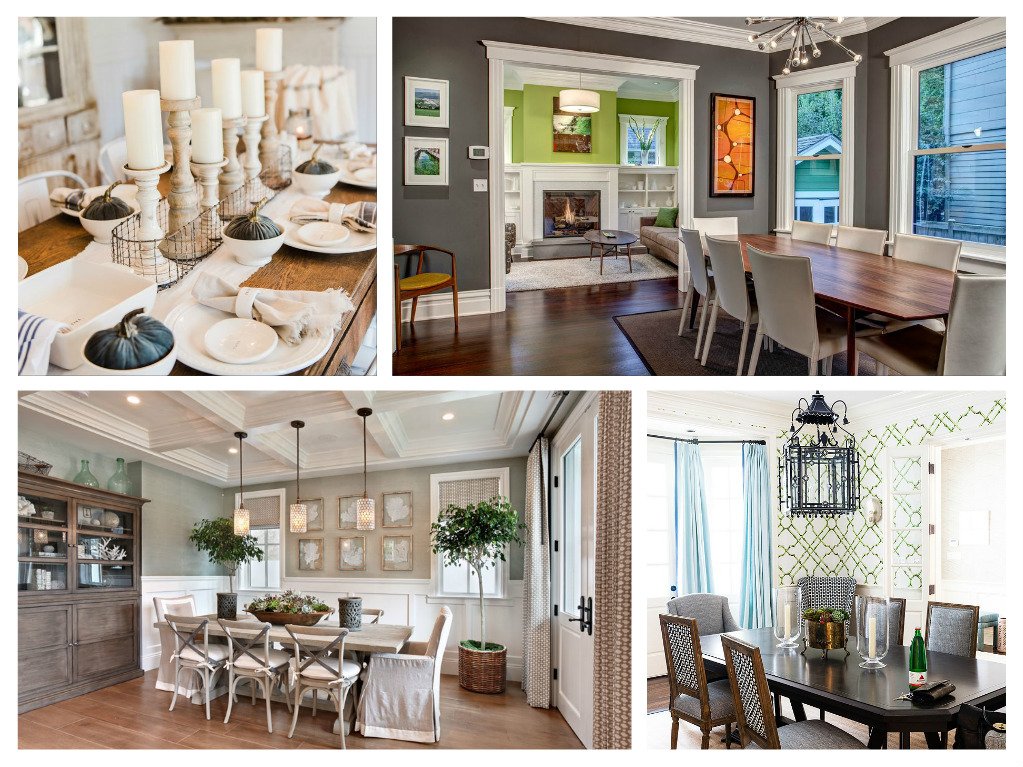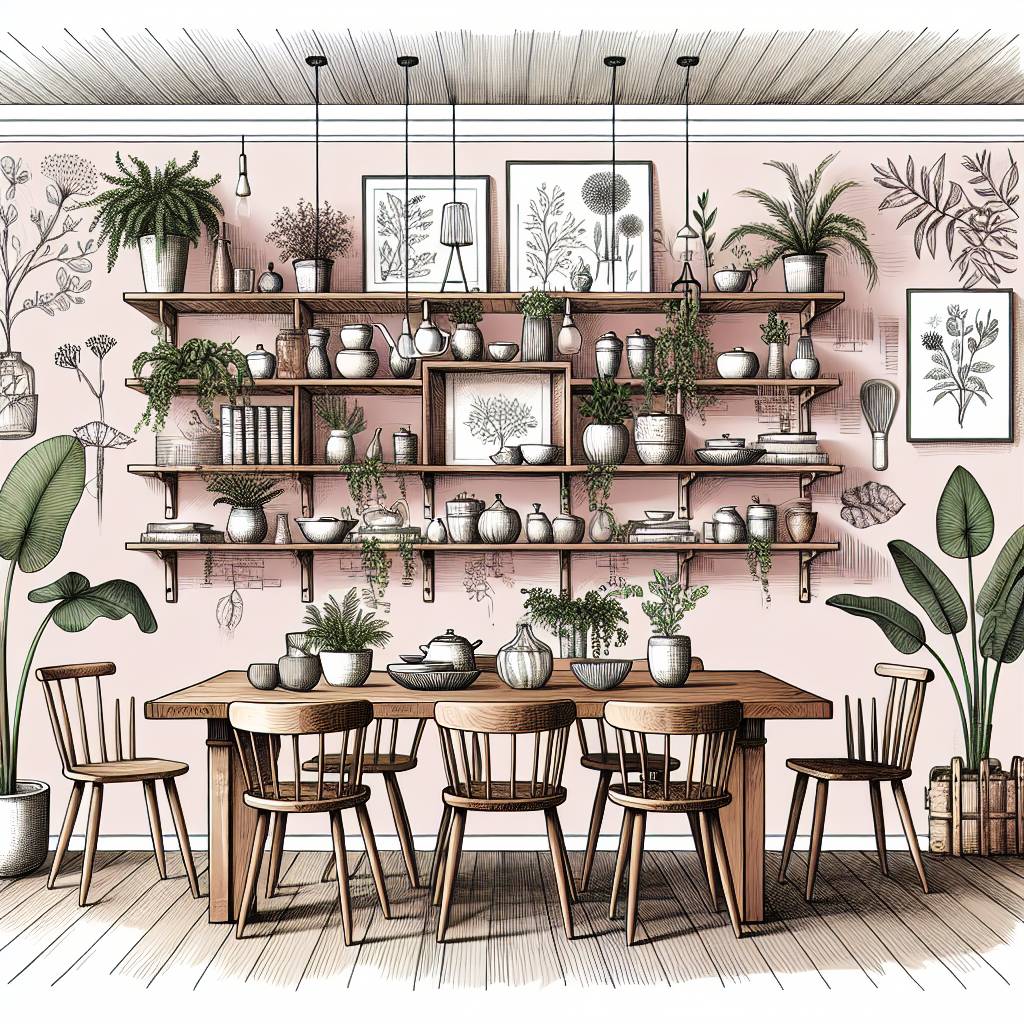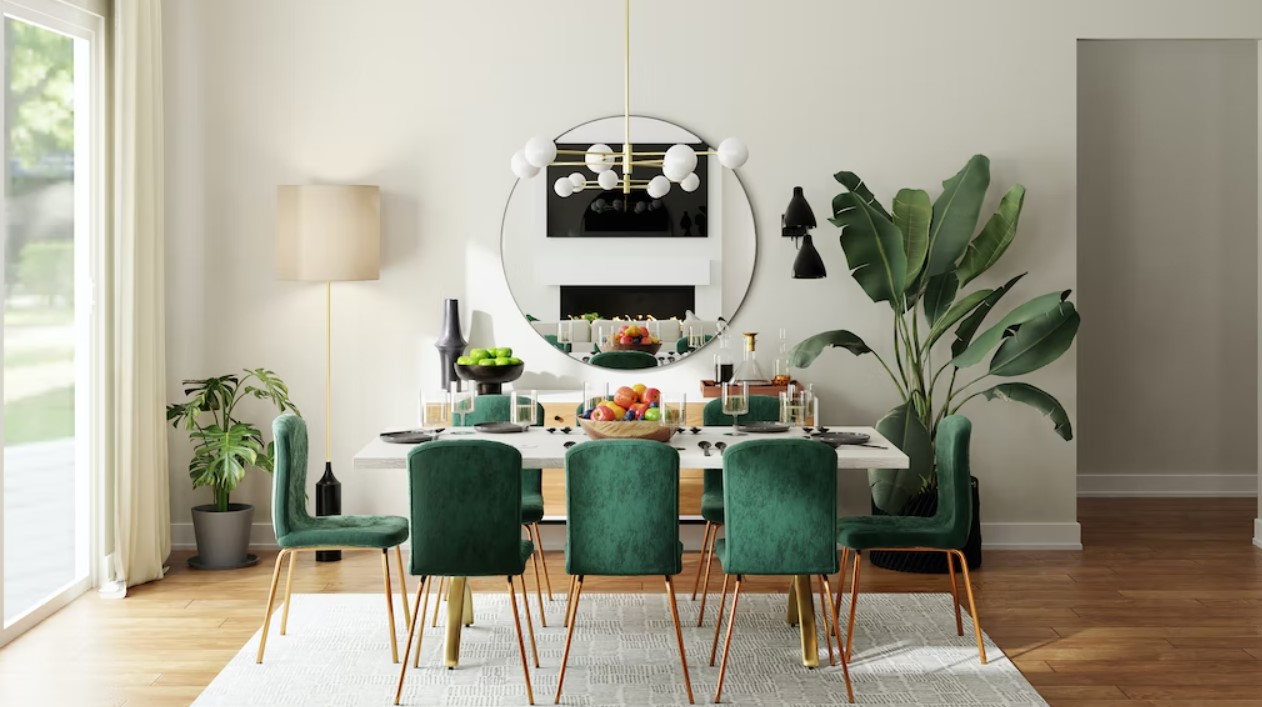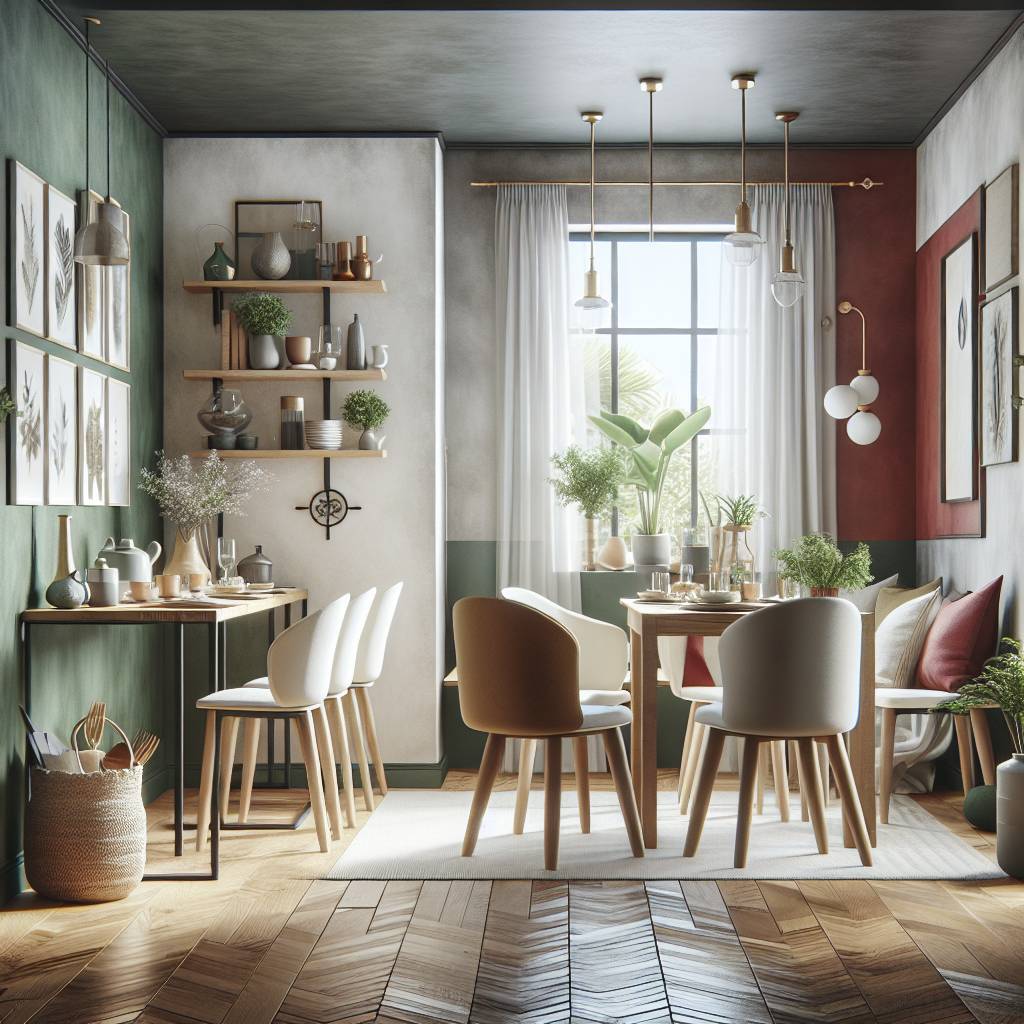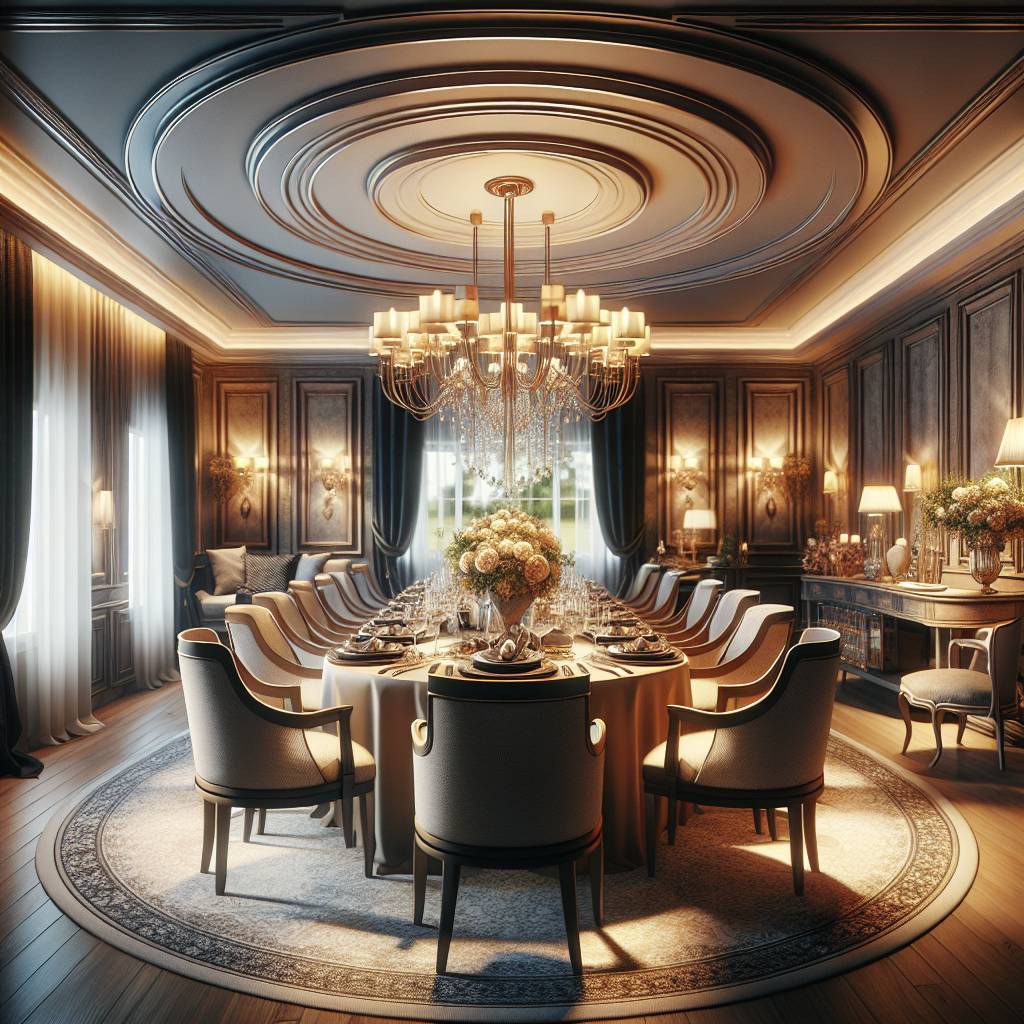Simplicity meets elegance as minimalism takes center stage in modern dining room design. Embracing clean lines, uncluttered spaces, and a less-is-more philosophy, this trend offers a stark contrast to traditional ornate dining settings. By incorporating minimalist elements such as sleek furniture, neutral color palettes, functional decor, and dark wood, you can transform your dining area into a sophisticated yet inviting space that exudes serenity.
Minimalist design encourages mindfulness in selecting each piece of furniture and decor, ensuring that every item serves both an aesthetic and practical purpose. This approach fosters an atmosphere of tranquility while allowing the focus to remain on shared meals and engaging conversations. With careful curation and thoughtful restraint, creating a modern minimalist dining room becomes an opportunity to elevate simplicity into timeless sophistication.
Key Takeaways
- Embrace a neutral color palette to achieve a timeless and elegant look in your modern dining room.
- Incorporate natural light and materials to create a serene and calming ambiance for a minimalist dining space.
- Use decluttering techniques to maintain a clean and spacious look, promoting a sense of tranquility and simplicity.
- Explore different textures to add depth and visual interest to your minimalist dining room while maintaining the overall simplicity.
- Strive for balance and symmetry in the layout and decor to create a harmonious and visually appealing space.
- Utilize flat surfaces for both functionality and style, keeping the design minimal yet practical.
Embracing a Neutral Palette for Timeless Elegance
Sophistication in Simplicity
Incorporating minimalism into modern dining rooms involves embracing a neutral palette to create an atmosphere of timeless elegance. By utilizing shades of white, beige, and gray, the dining room can exude sophistication while offering a versatile backdrop for various decor elements. The simplicity of these neutral colors allows for easy updates and ensures that the space remains relevant as trends evolve.
A neutral palette provides a serene and calming ambiance in the dining room. The use of whites, beiges, and grays in modern dining room design ideas creates an open and airy feel that promotes relaxation and comfort during meals. This ambiance is especially beneficial in modern homes where individuals seek respite from the hustle and bustle of everyday life.
Versatility in Decor
One significant advantage of incorporating a neutral palette in a minimalist dining room is its versatility. It serves as an ideal foundation for integrating different textures, materials, or accent colors into the dining room space. For instance, adding wooden furniture or metallic accents against a neutral backdrop can bring warmth or add visual interest without overwhelming the overall aesthetic.
The neutrality of this minimalist color scheme also enables homeowners to experiment with seasonal decor changes effortlessly in their dining room. During festive periods such as Christmas or Halloween, pops of vibrant reds or oranges can be introduced through table settings or decorative items without clashing with the existing color scheme.
Easy Updates
Another compelling reason to embrace minimalism through a neutral palette is its adaptability over time. As interior design trends evolve, making updates to the dining room becomes hassle-free due to its foundational simplicity. Whether it’s swapping out throw pillows, changing artwork on walls, or introducing new lighting fixtures, these alterations seamlessly integrate within the existing color scheme.
Moreover, if there’s ever a desire for a complete overhaul down the line—perhaps transitioning from contemporary minimalism to another style—the neutrality offered by white, beige,and gray makes repurposing existing furniture pieces easier since they tend to complement various design aesthetics seamlessly.
Incorporating Natural Light and Materials for a Serene Ambiance
Embracing Natural Light
Large windows play a pivotal role in incorporating minimalism in modern dining rooms. They allow an abundance of natural light to flood the space, creating an atmosphere that is both tranquil and inviting. The presence of natural light not only illuminates the room but also gives it a sense of spaciousness and airiness, making it an ideal choice for embracing minimalism.
Natural light has the power to transform any space into one that feels open and welcoming. When large windows are strategically positioned in a dining area, they provide an uninterrupted connection with nature outside, enhancing the overall dining experience. Imagine enjoying meals bathed in soft sunlight or under the glow of twilight – it creates a serene ambiance that elevates the dining room’s aesthetic appeal.
Introducing Natural Materials
In addition to natural light, materials like wood and stone play a crucial role in infusing warmth and texture into modern dining rooms. The use of these materials adds depth to the space while maintaining simplicity – two key elements of minimalist design. For instance, incorporating dark wood furniture or accents can bring richness to the room without overwhelming its clean aesthetic.
By integrating these natural materials, such as wooden tables or stone countertops, you create visual interest within your minimalist space while still adhering to its fundamental principles. Moreover, utilizing sustainable materials aligns with eco-friendly practices often associated with minimalism.
The combination of ample natural light and earthy materials contributes significantly to fostering a calming environment within modern dining rooms. It promotes tranquility by evoking connections with nature while simultaneously offering functionality through practical design choices.
Decluttering Techniques for a Clean and Spacious Look
Removing Unnecessary Items
Removing unnecessary items is crucial in incorporating minimalism in modern dining rooms. By decluttering the space, you can create a clean and spacious look that promotes a sense of calm and tranquility. Start by assessing each item in the dining room and ask yourself if it serves a purpose or brings joy. If not, consider removing it to maintain simplicity and elegance.
Utilizing storage solutions such as built-in cabinets or floating shelves is an effective way to keep clutter at bay while adding functionality to the dining area. These storage options offer seamless integration with the overall design, ensuring that essential items are neatly tucked away while still being easily accessible when needed.
Minimalist Furniture with Hidden Storage Compartments
Incorporating minimalist furniture with hidden storage compartments is another excellent strategy for achieving a clean and spacious look in modern dining rooms. Opt for sleek dining tables with built-in drawers or benches that open up to reveal additional storage space underneath their seats. These innovative furniture pieces not only contribute to the minimalist aesthetic but also provide practical solutions for organizing dining essentials without compromising on style.
Exploring Texture to Add Depth to Minimalist Dining Rooms
Creating Visual Interest
Incorporating textured elements like woven chairs or textured wall panels adds depth to the minimalist dining room. By combining different textures, such as smooth surfaces with rough textures, you can create visual interest in the space. For example, pairing a sleek glass dining table with rattan chairs brings together contrasting textures that elevate the overall aesthetic of the room.
Textured rugs or curtains can also enhance the overall aesthetic of a minimalist dining room. A natural fiber rug under the dining table not only adds warmth and texture but also creates a cozy atmosphere within the clean and minimalistic setting. Similarly, incorporating linen curtains with subtle patterns or weaves can introduce an element of softness while maintaining the simplicity of the space.
Harmonizing Elements
It’s important to harmonize these elements with existing furniture and decor. For instance, if your dining area features wooden furniture, consider adding textural contrast through upholstered seating or decorative wall panels made from materials like reclaimed wood or metal.
By thoughtfully integrating various textures into your dining space, you can avoid overwhelming its minimalist design while still infusing character and dimension into the environment. This approach allows for a balanced composition where each textured element complements rather than competes with one another.
Achieving Balance and Symmetry in Layout and Decor
Balancing Furniture Placement
Achieving a balanced layout is crucial in incorporating minimalism in modern dining rooms. Placing furniture strategically creates a harmonious flow within the space. For instance, arranging the dining table at the center of the room with an equal distance from other furniture items can establish a sense of equilibrium.
Balanced placement also involves ensuring that there is enough space between each piece of furniture. This not only allows for easy movement but also prevents overcrowding, which is essential in maintaining a minimalist aesthetic. By keeping an open area around each item, it helps to create an uncluttered and serene environment.
Symmetrical Arrangements of Decor Items
Symmetry plays a vital role in creating visual appeal when incorporating minimalism into modern dining rooms. Using identical or similar decor items on either side of the room can bring about a sense of order and balance to the space. For example, placing matching chairs on opposite sides of the dining table contributes to achieving symmetry while enhancing the overall aesthetics.
In addition to symmetrical arrangements, incorporating geometric shapes into decor items can further enhance balance within the dining room. Utilizing square or rectangular-shaped artwork or mirrors on adjacent walls adds structure and cohesion to the design scheme.
Geometric Shapes in Furniture or Artwork
Integrating geometric shapes into minimalist design contributes significantly to achieving balance within modern dining spaces. For instance, opting for a rectangular or oval-shaped dining table instead of irregular shapes helps maintain uniformity and simplicity.
Furthermore, selecting chairs with clean lines and angular designs complements this approach by adding visual interest without overwhelming the space with unnecessary details. Incorporating artwork featuring geometric patterns such as stripes or grids further reinforces this cohesive design element while contributing to an overall balanced look.
To summarize:
- Balanced furniture placement creates harmony
- Open areas between pieces prevent clutter
- Symmetrical arrangements bring order
- Geometric shapes contribute to balance
- Uniformity enhances simplicity
Utilizing Flat Surfaces for Functionality and Style
Streamlined Furniture
In modern dining rooms, utilizing flat surfaces is essential for achieving a minimalist look. Sleek countertops and minimalist sideboards not only provide functionality but also add a touch of style to the space. By opting for streamlined furniture with clean lines, you can enhance the minimalist aesthetic in your dining area. For example, choosing a simple, rectangular dining table with smooth edges can contribute to the overall clean and uncluttered feel of the room.
Selecting ones that are sleek and uncomplicated further complements the minimalism concept. Avoiding ornate designs or intricate details on both tables and chairs helps maintain simplicity while promoting an uncluttered environment.
Clutter-Free Surfaces
Keeping surfaces clear of unnecessary items is crucial in maintaining a clutter-free look in modern dining rooms. This means avoiding overcrowding tabletops or sideboards with too many decorative pieces or miscellaneous objects. Instead, focus on displaying a few carefully chosen items that serve both functional and aesthetic purposes.
For instance, placing a single vase with fresh flowers as a centerpiece on the dining table can add an elegant touch without overwhelming the space. Incorporating storage solutions such as hidden drawers within sideboards allows for tucking away items that are not regularly used but still need to be accessible when necessary.
Maximizing Negative Space to Enhance Minimalist Aesthetics
Embracing Negative Space
Embracing minimalism in modern dining rooms involves maximizing the use of negative space. This means leaving empty walls or open areas between furniture to create a sense of openness and airiness. By embracing negative space, you can achieve a minimalist and uncluttered look that promotes a calming atmosphere in your dining area.
Negative space allows the eye to rest and appreciate simplicity, which is at the core of minimalist design. Instead of filling every corner with furniture or decor, consider leaving some areas intentionally bare. For example, instead of covering all available wall space with artwork, leave some walls completely free from decoration. This approach helps create an environment where each piece of furniture or decor can stand out on its own without overwhelming the overall aesthetic.
Strategic Placement for Focal Points
Incorporating minimalism doesn’t mean completely eliminating all decorative elements from your dining room. Instead, it’s about strategically placing focal points to enhance negative space while adding visual interest. You can achieve this by incorporating minimalist artwork or a single striking piece that draws attention without overpowering the entire room.
For instance, rather than adorning every surface with various decorations, choose one statement piece such as a sleek sculpture or a carefully selected painting to serve as the focal point in the room. Placing these items against clean white walls or amidst open spaces between furniture further accentuates their significance while maintaining an overall minimalist ambiance.
Selecting Sleek and Sculptural Lighting for Visual Interest
Statement Pieces
In a minimalist dining room, choosing sleek and sculptural light fixtures is crucial. Pendant lights with clean lines or unique shapes can become focal points, adding visual interest to the space. These fixtures not only provide adequate lighting but also serve as striking design elements in a streamlined environment.
When selecting lighting options, consider pieces that complement the overall aesthetic of the room. For instance, a linear pendant light with simple, elegant lines can seamlessly blend into a minimalist setting while still making a statement. Opting for sculptural fixtures allows you to maintain an uncluttered look while introducing an element of artistry.
Mood Enhancement
Incorporating dimmable lighting options is another essential aspect of incorporating minimalism in modern dining rooms. The ability to adjust the brightness of the lights enables you to create different moods within the dining area. Whether it’s an intimate gathering or a lively dinner party, dimmable lighting offers flexibility in setting the ambiance according to your preferences.
Dimmable lights also contribute to maximizing negative space by allowing you to control how much attention is drawn towards specific areas within the room. By adjusting the intensity of light, you can highlight certain elements while keeping others understated, thereby maintaining a balanced and harmonious visual appeal.
To summarize:
- Choose sleek and sculptural light fixtures as focal points.
- Consider pendant lights with clean lines or unique shapes.
- Incorporate dimmable lighting options for creating different moods.
Experimenting with Contrast and Pops of Color for Vibrancy
Adding Pops of Color
Incorporating minimalism in modern dining rooms doesn’t mean sticking to a monochromatic palette. You can add pops of color through accessories like vibrant artwork, statement vases, or bold tableware. These colorful accents bring life and energy to the space without overpowering the minimalist design.
For example, a sleek white dining room with minimalistic furniture can be instantly transformed by adding bright yellow chairs or a striking piece of abstract art on the wall. These small injections of color create focal points and visual interest while maintaining the overall simplicity of the room.
Creating Visual Impact with Contrast
Contrasting elements play a crucial role in elevating the appeal of a minimalist dining room. By pairing dark furniture with light walls or vice versa, you create an eye-catching visual impact that adds depth and dimension to the space. For instance, a dark wooden dining table against a backdrop of crisp white walls creates an elegant and sophisticated look that is both modern and inviting.
Moreover, integrating contrasting textures such as smooth marble tabletops with rough-hewn wooden chairs further enhances the visual intrigue within a minimalist setting. The interplay between different materials not only adds diversity but also amplifies the tactile experience within the dining area.
Using Bold Patterns Sparingly
While minimalism often emphasizes clean lines and simplicity, incorporating bold patterns sparingly can infuse excitement into your modern dining room without compromising its streamlined aesthetic. Consider using geometric-patterned rugs or subtly printed wallpaper as accent pieces rather than overwhelming the entire space with intricate designs.
For instance, introducing patterned throw pillows on neutral-toned seating provides just enough visual interest without overshadowing other design elements in the room. This approach allows you to maintain an uncluttered ambiance while still injecting personality into your dining area through carefully selected patterns.
Final Remarks
You’ve now uncovered the essential elements for infusing minimalism into your modern dining space. Embracing a neutral palette, harnessing natural light, and decluttering techniques are the building blocks for creating a serene and spacious ambiance. Adding texture, achieving balance, and utilizing negative space will elevate the minimalist aesthetic of your dining room. The selection of lighting and the strategic use of contrast and pops of color will add depth and vibrancy to your space. Now it’s your turn to put these ideas into action and transform your dining area into a minimalist haven that exudes elegance and tranquility.
Ready to embark on your minimalist dining room journey? Start by implementing one idea at a time and gradually build towards creating a space that reflects your unique style while embracing minimalism’s timeless allure.
Frequently Asked Questions
How can I incorporate minimalism in my dining room design?
To incorporate minimalism in your dining room, focus on a neutral color palette, decluttering techniques, and incorporating natural light and materials. Utilize flat surfaces for functionality and style while maximizing negative space to enhance the minimalist aesthetics.
What are some tips for achieving a clean and spacious look in a minimalist dining room?
To achieve a clean and spacious look, consider decluttering techniques such as storage solutions that keep items out of sight. Embrace a neutral palette to create an airy atmosphere, utilize flat surfaces for functionality, and maximize negative space to enhance the minimalist aesthetics.
What lighting options work best for modern minimalist dining rooms?
Sleek and sculptural lighting fixtures are ideal for adding visual interest to modern minimalist dining rooms. Consider pendant lights or linear chandeliers with clean lines that complement the overall simplicity of the space while providing adequate illumination.
How can I add vibrancy to my minimalist dining room without compromising its simplicity?
Experiment with pops of color through accessories like artwork or tableware. Introduce contrast using subtle accents against a neutral backdrop. By carefully selecting vibrant elements against an otherwise minimalistic setting, you can infuse energy into your dining area without overwhelming its serene ambiance.
What role does texture play in enhancing the aesthetics of minimalist dining rooms?
Texture adds depth and visual interest to minimalist spaces. Consider incorporating natural textures like wood grain or stone finishes alongside smooth surfaces to create a balanced sensory experience within your dining area.
